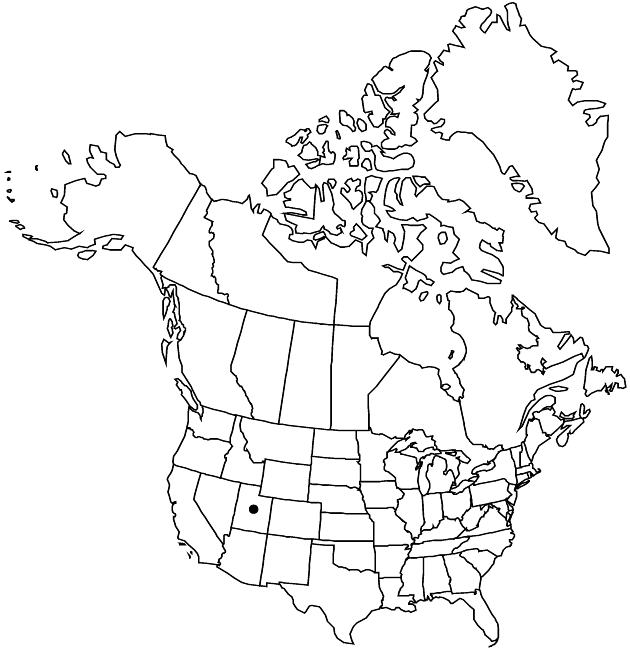Erigeron garrettii
in J. M. Coulter and A. Nelson, New Man. Bot. Rocky Mt., 526. 1909.
Perennials, (3–) 5–23 cm; taprooted, caudex branches lignescent, apparently elongate. Stems erect, sparsely strigillose to glabrate, eglandular. Leaves mostly basal (persistent); blades oblanceolate to spatulate (not folding), 20–70 (–120) × 3–13 mm, cauline abruptly reduced distally (bases not clasping), margins entire, sparsely ciliate (apices rounded to acute), faces glabrate or glabrous, eglandular. Heads 1. Involucres 5–8 × 8–17 mm. Phyllaries in 2–3 series (purplish at least at tips), glabrous or sparsely strigillose, densely minutely glandular. Ray-florets 20–35; corollas white, drying white or sometimes lilac-tinged, 7–13 mm, laminae coiling. Disc corollas 3.9–5.3 mm. Cypselae 2.5–3 mm, 2 (–3) -nerved, faces sparsely strigose; pappi: outer of setae or scales, inner of 13–23 (white-shiny) bristles. 2n = 18.
Phenology: Flowering Jun–Aug.
Habitat: Moist cliff faces and crevices, mostly limestone, soil among boulders
Elevation: 2700–3800 m
Discussion
Of conservation concern.
Selected References
None.
